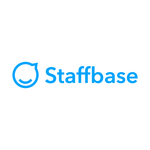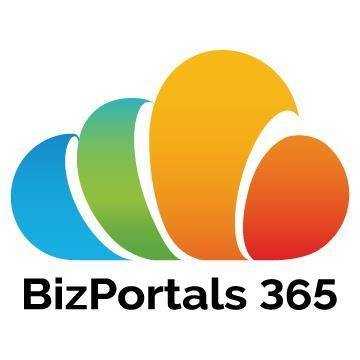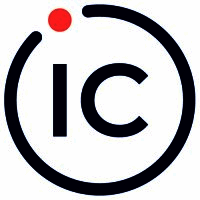What Is Intranet Software?
Intranet software, often known as corporate portal software, is a powerful tool that allows enterprises to set up a secure and private network for internal communication, collaboration, and data exchange. It is essentially a private version of the internet that is only accessible to employees or authorized users within a company. Intranet software serves as a central hub for employees to access essential documents, company news and updates, and communicate with one another via chat, forums, and social media.
It also supports seamless interaction with other company systems, making it easier for staff to execute tasks and manage processes effectively. One of the primary advantages of employing intranet software is increased communication and collaboration inside an organization. Employees can collaborate more efficiently regardless of their physical location thanks to features like real-time messaging, document sharing, and project management tools.
Furthermore, intranet software includes sophisticated security capabilities to protect sensitive company information and prevent unwanted access. This is critical for firms that work with sensitive data or have stringent regulatory obligations. When choosing intranet software, seek for customized capabilities that address your organization's specific needs.
For example, some software may support social networking, but others may concentrate on document management and collaboration. Scalability is also an important consideration because your organization's needs may alter over time. Look for a solution that enables easy expansion and integration with third-party applications.
What Are The Recent Trends In Intranet Software?
In recent years, intranet software has evolved significantly to meet enterprises' shifting needs. Intranet software has evolved from a simple internal communication platform to a powerful collaborative tool that boosts staff productivity and engagement levels.
Buyers should be aware of the following new intranet software trends:
1. Mobile-Friendly Intranets: With the development of remote work and the increased use of mobile devices, intranet software must be accessible on the go. To meet this need, many intranet software providers now provide mobile-friendly interfaces and apps, allowing employees to stay connected, access information, and collaborate from anywhere and at any time.
2. Cloud-Based Solutions: The use of cloud-based intranet software has grown in popularity in recent years due to its numerous advantages, such as cost-effectiveness, scalability, and accessibility. Organizations are increasingly choosing cloud-based intranets over traditional on-premises solutions, which enable them to expedite procedures and decrease IT overhead.
3. Integration With Third-Party Tools: Intranet software is no longer simply a platform for internal communication. Intranets have evolved into a primary hub for all corporate processes by integrating with a variety of third-party applications such as project management, CRM, and HR software. This integration allows staff to access all of the necessary tools and information from a single platform, resulting in greater efficiency and production.
4. Emphasis On Employee Experience: Organizations have prioritized employee experience, and intranet software can help improve it significantly. Modern intranet software is developed with a user-friendly interface, tailored content, and intuitive features to improve the entire employee experience. This emphasis on the user experience leads to increased adoption among employees, as well as improved engagement and productivity.
5. AI And Automation: Adding artificial intelligence (AI) and automation to intranet software has transformed enterprises. AI-powered chatbots, for example, may undertake mundane activities such as answering employee questions, saving HR and IT departments time. Automation of workflows and processes on the intranet saves time and lowers the possibility of human error.
Benefits Of Using Intranet Software
Intranet software is a strong tool that is becoming more popular among businesses of all sizes. It enables enterprises to set up a private network for internal communication and collaboration, giving employees a centralized platform to access critical information, documents, and apps. There are various benefits to employing intranet software, which can significantly increase a company's overall efficiency and production.
Let's look at the primary benefits that make this software a worthwhile investment for any buyer.
1. Improved Communication And Collaboration: One of the primary advantages of implementing intranet software is its ability to promote seamless communication and collaboration inside an organization. Employees can stay connected and collaborate on projects in real time using features like instant messaging, discussion boards, and document sharing, regardless of where they are located. This not only increases teamwork, but it also saves time and effort when sending emails and organizing meetings.
2. Streamlined Access To Information: Intranet software enables businesses to centralize all of their critical information in one location, making it easily accessible to all employees. This means no more trawling email threads or shared drives for essential data. Employees may find the information they need through a simple search, saving time and increasing overall efficiency.
3. Increased Productivity: In today's fast-paced corporate world, time is critical. Intranet software improves productivity by giving employees rapid and simple access to necessary tools and resources. Employees can focus on their duties without having to switch between different applications and systems because they have everything they need in one spot.
4. Improved Organization And Management: Intranet software has a variety of tools and features for organizing and managing activities, projects, and workflows. It enables managers to assign tasks, track progress, and establish deadlines, ensuring that everyone is on the same page and projects are completed efficiently and on schedule. This also contributes to increased accountability and openness inside the organization.
5. Cost-Effective: Implementing intranet software solutions can result in long-term cost benefits for enterprises. Companies may streamline their processes by improving communication, collaboration, and efficiency, reducing the need for many tools and apps. This not only saves time but also lowers operating costs.
6. Secure And Confidential: Intranet software protects the secrecy and privacy of all internal communications and data. It enables businesses to control user permissions, limiting access to critical information to only authorized staff. This not only safeguards personal information, but also aids in the compliance with privacy requirements.
Important Factors To Consider While Purchasing Intranet Software?
In today's digital world, having a dependable and efficient intranet system is critical for businesses of any size. However, with so many options available on the market, selecting the best intranet software for your firm can be difficult.
To assist you make an informed selection, we have outlined the most important criteria to consider when selecting intranet software.
1. User-Friendly Interface: One of the most important elements to consider when selecting intranet software is the user interface. A user-friendly interface not only makes things easier to use, but it also boosts employee productivity and saves time. Look for software with a clean and structured interface, simple navigation, and adjustable functionality to meet your company's individual requirements.
2. Collaboration Tools: A effective intranet system encourages collaboration and communication among team members. As a result, search for software that has features like chat, video conferencing, file sharing, and project management to help you collaborate and make better decisions.
3. Customization Options: Every organization has its own processes and workflows. As a result, it is critical to choose intranet software that can be customized to meet your company's specific needs. This includes personalizing branding, developing unique workflows, and integrating with your current tools and systems.
4. Security Features: With growing concerns about data breaches and cyber dangers, security should be the first priority when selecting intranet software. To protect your organization's sensitive information, ensure that the software has features such as user authentication, data encryption, and access controls.
5. Mobile-Friendly: In today's fast-paced corporate climate, having access to the intranet on the road is essential. Look for software that has a mobile version or a specialized app, so your team members can stay connected and productive even when working remotely.
6. Technical Support And Training: Regardless of how user-friendly the software is, technical problems and inquiries may arise. As a result, it is critical to select a provider who provides dependable technical support and suitable training for your staff in order to maximize the benefits of the intranet system.
7. Scalability: An intranet system will become increasingly necessary as your company grows. As a result, it is critical to select software that can scale with your organization's expansion. This will save you the time and money of obtaining a new system in the future. Keeping these things in mind while selecting intranet software will allow you to select the best solution for your firm. Make careful to examine different options, read reviews, and take advantage of free trials before making a final choice. With the correct intranet software, your firm can enhance collaboration, increase productivity, and achieve its objectives more effectively.
What Are The Key Features To Look For In Intranet Software?
When considering acquiring Intranet software for your firm, it is critical to carefully assess the major features that will best fulfill your requirements.
Here are some key things to look for:
1. User Interface: A user-friendly interface is critical for ensuring that Intranet software is easily adopted and used. Look for a clean, intuitive design that may be tailored to your company's logo.
2. Communication And Collaboration: Employees should be able to communicate and collaborate more efficiently using intranet software. Look for services like real-time texting, task assignment, and document sharing to help with teamwork.
3. material Management: The ability to create, manage, and exchange material is an important factor to consider. Look for extensive content management tools such as version control, access restrictions, and search functionality to guarantee that knowledge is shared seamlessly within your organization.
4. Mobile Compatibility: As remote work becomes more common, a mobile-friendly intranet is vital. Look for software with a responsive design and a mobile app for convenient access on the go.
5. Security: Because intranet software may include important firm information, security precautions are critical. To ensure the security of your data, look for software that has strong data encryption, user authentication, and backup and recovery.
6. Customization And Integration: Because each organization has unique requirements, it is critical to select Intranet software that can be adjusted and integrated with existing systems. Look for software that allows for custom branding, integrations with common applications such as Microsoft Office, and add-ons for specialized features.
7. Analytics And Reporting: To assess the performance of your Intranet and make data-driven decisions, search for software that includes analytics and reporting capabilities. This will allow you to track engagement, content views, and other key information. By carefully evaluating these critical qualities, you will be able to choose the best Intranet software for your company, enhancing communication, cooperation, and knowledge sharing among employees. When comparing software solutions, keep in mind your company's specific requirements and budget.
Why Do Businesses Need Intranet Software?
Businesses use intranet software to boost internal communication, streamline operations, and raise overall organizational productivity. This program provides a single platform for employees to access critical information, collaborate on projects, and communicate with one another, regardless of location or device. One of the primary advantages of intranet software is its ability to connect employees regardless of their physical location.
With remote work becoming more frequent, a functional intranet enables employees to stay connected and involved with their coworkers and the firm as a whole, fostering a feeling of community and improving teamwork. Furthermore, intranet software allows firms to concentrate and organize information, making it readily available to employees. This reduces the time spent looking for documents or contacting colleagues for information, hence increasing productivity.
It also guarantees that employees have access to the most recent information, minimizing miscommunications and discrepancies. In addition to communication and information management, intranet software includes a number of tools and capabilities for streamlining business processes. This involves task management, project collaboration, and document sharing, among other things.
Businesses can save time and resources by automating and streamlining these operations, freeing up personnel to work on more valuable activities. Another critical part of intranet software is its security features. A secure intranet protects sensitive company information from external attacks. It also provides for unique access levels, ensuring that employees only see information relevant to their roles.
Furthermore, intranet software provides analytics and reporting features that help firms gain vital insights into employee engagement, productivity, and platform utilization. This data can assist firms in identifying areas for improvement and making strategic decisions to improve the organization's overall performance.
How Much Time Is Required To Implement Intranet Software?
When considering deploying intranet software, the amount of time required varies depending on factors such as the organization's size and specific demands. However, the average deployment time for intranet software is between a few weeks and a few months. The first step in adopting intranet software is to choose the proper platform that fits your organization's goals and needs.
This entails investigating and assessing many possibilities before making a decision based on criteria such as features, pricing, and customer service. Once you've decided on intranet software, the next step is to plan and prepare for the deployment process. This includes identifying important stakeholders, establishing project timeframes, and allocating adequate resources for the project.
The real implementation process often entails setting up the intranet platform, configuring it to meet your organization's requirements, and moving existing data and content to the new platform. This may take several weeks, depending on the complexity of your organization's data and the level of customization necessary. Following the initial setup, there will most likely be a period of testing and training to ensure that the intranet works effectively and that staff are comfortable using it.
This can take a few weeks to a month, depending on your organization's size and level of technological sophistication. Overall, the implementation of intranet software can take anywhere from six weeks to six months, with larger firms potentially needing longer due to size and complexity. It is critical to interact with your preferred software provider throughout the process and ensure that they are ready to assist and debug any issues that may emerge.
To guarantee a seamless and successful implementation, a clear plan, the involvement of key stakeholders, and proper training are also required. When used appropriately, intranet software may significantly increase communication and cooperation inside your firm, making the time and effort invested in deployment well worthwhile.
What Is The Level Of Customization Available In Intranet Software?
The level of customisation accessible in intranet software varies according to the individual platform and capabilities provided by different vendors. However, most intranet software provides a high level of customization to match the specific demands of each enterprise. When examining customization possibilities, you should examine how much control you have over the style and layout of your intranet.
Some software may provide pre-designed templates that allow for minimal customization, but others offer a blank canvas for complete design freedom. Another important factor to consider is the capacity to adapt features and functionality to meet your organization's specific needs. This includes designing unique workflows, integrating with other tools and systems, and applying security standards tailored to your specific requirements.
A good intranet software should also allow for user-level customisation. This implies that individual employees can tailor their intranet experience, such as selecting the material that appears on their homepage or creating a personalized news feed. When choosing intranet software, consider the simplicity of customization. Look for systems with a user-friendly interface and drag-and-drop capabilities, which allow for easy modification without the need for coding expertise.
Which Industries Can Benefit The Most From Intranet Software?
In today's fast-paced business world, communication and teamwork are critical to the success of any organization. Here's when intranet software comes in handy. It serves as a consolidated platform for employees to share information, ideas, and expedite operations. While the advantages of intranet software are clear, the question remains: which industries would profit the most from its implementation?
1. Corporate Organizations: Intranet software is ideal for corporate organizations with a big number of employees scattered across multiple locations. It enables secure and efficient communication, ensuring that all staff remain connected and updated.
2. Healthcare: There is a great demand for secure and reliable information sharing among medical experts. Intranet software can help with this process by providing remote access to patient records and other essential data.
3. Education: Intranet software may significantly improve the education sector by allowing teachers and students to collaborate, share resources, and communicate effectively. It also enables the sharing of critical information to students, parents, and educators.
4. Non-Profit Organizations: Intranet software may transform non-profit organizations by facilitating effective communication among volunteers, donors, and other stakeholders. It also helps with project management and resource allocation, resulting in improved outputs.
5. Government: Government agencies have a large amount of data that must be maintained and disseminated safely. Intranet software is a perfect alternative for government entities looking to optimize procedures and improve departmental collaboration.
6. Retail: Intranet software can improve communication and collaboration across store locations, the corporate office, and distant staff. It can also improve operational efficiency by making critical documents and policies more accessible.
Conclusion
Overall, investing in intranet software is a sound investment for any company trying to improve communication, collaboration, and productivity inside its workforce. The key is to carefully examine your individual requirements and extensively explore the available possibilities before selecting the best solution for your company. First and foremost, set a budget and prioritize the features that are most critical to your firm.
Is it necessary to have a customisable intranet with branding features? Do you require sophisticated document management features or a user-friendly interface? By outlining your criteria, you may narrow your search to options that address your specific needs while avoiding splurging on needless features. Next, think about the installation process and continuing support. Will the software take a substantial amount of time and resources to install and configure?
What type of training and technical assistance does the vendor provide? A smooth implementation and consistent support are critical for the intranet's effective acceptance and long-term use. It is also necessary to evaluate the software's scalability. Will the intranet be able to handle an increasing number of users and data as your company grows?
Look for a system that can scale with your company to avoid the need to switch to a different platform in the future. Another important thing to consider is integration capability. Is the intranet software compatible with your company's other tools and systems? This would enable seamless communication and data sharing across multiple platforms, enhancing efficiency and saving time. It is also important to assess the amount of security and privacy provided by the intranet software.
With sensitive data being exchanged and maintained on the intranet, it is critical to implement strong security measures to secure your company's information from cyber threats. Last but not least, read reviews and get input from other companies that have used the same product. This can provide vital information about the product's functionality, usability, and general satisfaction.
Finally, investing in intranet software can benefit your firm by improving cooperation, productivity, and organization. You may optimize the benefits of an intranet solution by carefully considering your needs and properly investigating the available solutions.






















